On View: The Lauzon Collection at the Clark Art Institute
There are two words that can thrill museum curators and collectors alike when it comes to sharing knowledge and enthusiasm for a collection – “on view.” Making this happen is an opportunity for both to see and learn more about those items they are passionate about: early American glass.
First, the Collectors
Albert and June Lauzon collected early American glass for twenty-five years. Originally from Ohio, they spent their later years at a home on Cape Cod, touring New England, and building their collection of early American glass by visiting flea markets, estate sales, antique shows, and auctions.
Art Institute in Williamstown, MA in 1975, when they loaned some of their glass collection for exhibition. Following Albert’s death in 1978, June donated a portion of their collection to the Clark. She continued to support the museum over the next three decades with donations of glass and funds that were used toward the construction of the Clark Center, which opened in summer 2014.
“[The Lauzons] really focused on early American blown glass,” according to Kathleen Morris, the Sylvia and Leonard Marx Director of Collections and Exhibitions and Curator of Decorative Arts at the Clark. Alexis Goodin, curatorial research associate, added, “They acquired a variety of forms and glass made by a variety of production processes, but their favorite was blown three-mold glass.”
Hiding in Plain Sight
While selections of the glass collection at the Clark were seen over time in an American decorative arts gallery, as a whole it remained in storage “for decades and decades,” said Alexis. The objects were carefully stored, as space for the display of the 240-piece collection was limited before the Clark’s expansion and renovation project, completed in November of 2016.
This collection had long been earmarked for a permanent gallery of its own, and Kathy and Alexis started to go through the collection to plan for the new display in 2012. “One of the first things we did was to take all the glass out of the storage bins and put them on shelves so we could really become familiar with each piece and the collection as a whole,” said Kathy.
When outlining a plan for the Lauzon Glass Study Gallery, both Kathy and Alexis drew upon a world of experience from glass experts. Gathering expertise meant travel and time consulting with other curators to see how other glass collections were displayed. “Alexis and I spent a lot of time reviewing the Clark collection with glass experts, seeing where the strengths and weaknesses were. We did target specific purchases to add to the collection in order to enhance the story of early glass production,” said Kathy.
When it came to creating groupings for display, details were daunting at times. “We spent a lot of time with the collection matching decanters with stoppers and while they may have been placed together, [they] did not fit. We looked at how the stopper was made – did it have the right color, pattern, etc. – and have a few stoppers that are on display as an example of a purchase of the pieces separately. A starburst pattern on one stopper matches a decanter but it does not fit in the neck,” said Kathy.
The Lauzon Glass Study Gallery showcases many forms and colors of glass, including decanters, figured flasks, lighting implements, and objects for the table such as drinking glasses and salt cellars. A small selection of late nineteenth-century art glass and early-twentieth-century cut glass complements the earlier material.
It is fitting that the Sterling and Francine Clark Art Institute, established by two collectors each with an extraordinary eye, would become the home for an amazing collection of Early American Glass thanks to a gift from Albert and June Lauzon. “One of the things that was really important to June Lauzon was for people to understand how glass was made because she thought this was fascinating and wanted to convey the intricacies of making glass,” said Alexis. The Clark has a commitment to academic research and scholarly study – an integral part of the Clark’s mission since its founding in 1950.
The Lauzon Glass Study Gallery features displays that tell the story of the glass industry in early America. As American glass factories developed, novel forms and patterns of decoration were created. The collection features free-blown glass (made without use of molds or presses), but is particularly rich in glass made from three-part molds. Such glass, which could be produced in greater numbers than by using the free-blown method, was created with molds that formed the vessel’s final shape and created decorative
patterns on the surface of the glass. The collection also features a small selection of pressed glass, a mid-nineteenth century innovation of production that enabled even faster and more efficient production of glass products.
Environmentally Sound
The transformation of a former special exhibition gallery to a permanent collection gallery in the Clark’s Manton Research Center also involved creativity and expertise. Especially helpful was Chief Conservator at the Corning Museum of Glass, Stephen Koob, who is dedicated to being a mentor and teacher to others in the field. His experience and insight helped the Clark create displays that utilized natural light and cases that allow the glass to “breathe.”
Each display is carefully regulated not only for temperature and humidity, but also for air circulation that helps slow the degradation of the glass as it continues to settle over time.
that educated eye when searching for early American glass?
Kathleen Morris is the Sylvia and Leonard Marx Director of Collections and Exhibitions and Curator of Decorative Arts. Alexis Goodin is the curatorial research associate. Kathy and Alexis worked in concert on the planning and installation of a permanent home for The Clark’s collection of early American glass. The installation of the Lauzon Glass Study Gallery is supported by a grant from The Henry Luce Foundation.
Of Note: Taking Care of Glass
Kathy and Alexis and a team of Clark staff washed all the glass before installation, using deionized water and a mild solvent, as instructed by glass conservators. For more information on caring for glass, see Stephen Koob’s Conservation and Care of Glass Objects (London: Archetype, 2006).


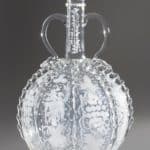

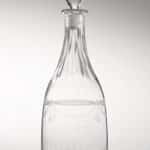
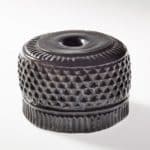
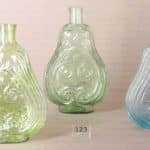

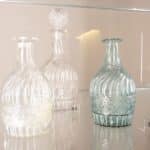
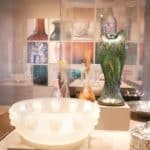
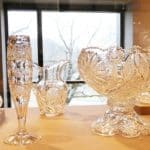

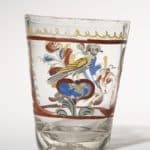
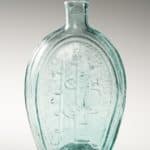
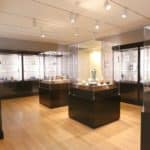
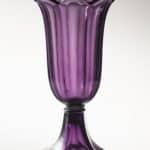
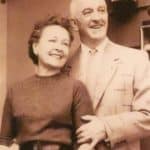




Related posts: